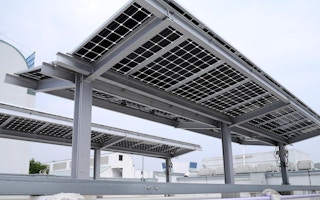As solar energy prices continue to hit record lows and the market grows more competitive, manufacturers are constantly on the look-out for ways to differentiate their modules from other industry players.
In its search to squeeze more value out of each solar panel, the industry has reached a simple realisation: Sunlight reflected off the ground can also generate power and failing to capture it is a waste.
This has spurred the development of a technology known as bifacial panels. Like all solar panels, the sky-facing surface converts sunlight into power, but the underside can also absorb light that bounces off the pavement or rooftop.
Companies worldwide have launched double-sided modules in recent years, and one firm which says its bifacial panels excel efficiency and productivity is Chinese photovoltaic giant Yingli Solar.
Founded in 1998 and headquartered in Baoding, China, the firm is today one of the world’s largest solar module manufacturers, with more than 60 million solar panels shipped to date.
Yingli’s bifacial modules, known as the TwinMax series, were launched last year, and are made using the company’s special technology, known as Panda cells. These use phosphorous, rather than boron, to treat the silicon so that it can conduct electricity by up to 10 per cent more efficiently than others.
Stefan Allwang, global product marketing manager for Yingli Solar, notes that Panda cells are exceptionally sensitive to light, and “this gives you that extra energy at the start and end of the day, and you earn more from the sun”.
Thanks to the higher productivity of Panda cells and the two-sided design, TwinMax panels are as much as 30 per cent more efficient than conventional modules, says Allwang. With a 30-year warranty and Yingli’s trademark robust manufacturing, “TwinMax is a durable and reliable solution,” he adds.
Here, Eco-Business takes a closer look at the benefits of Yingli Solar’s TwinMax panels and why they are ideal for a densely-packed city like Singapore.










